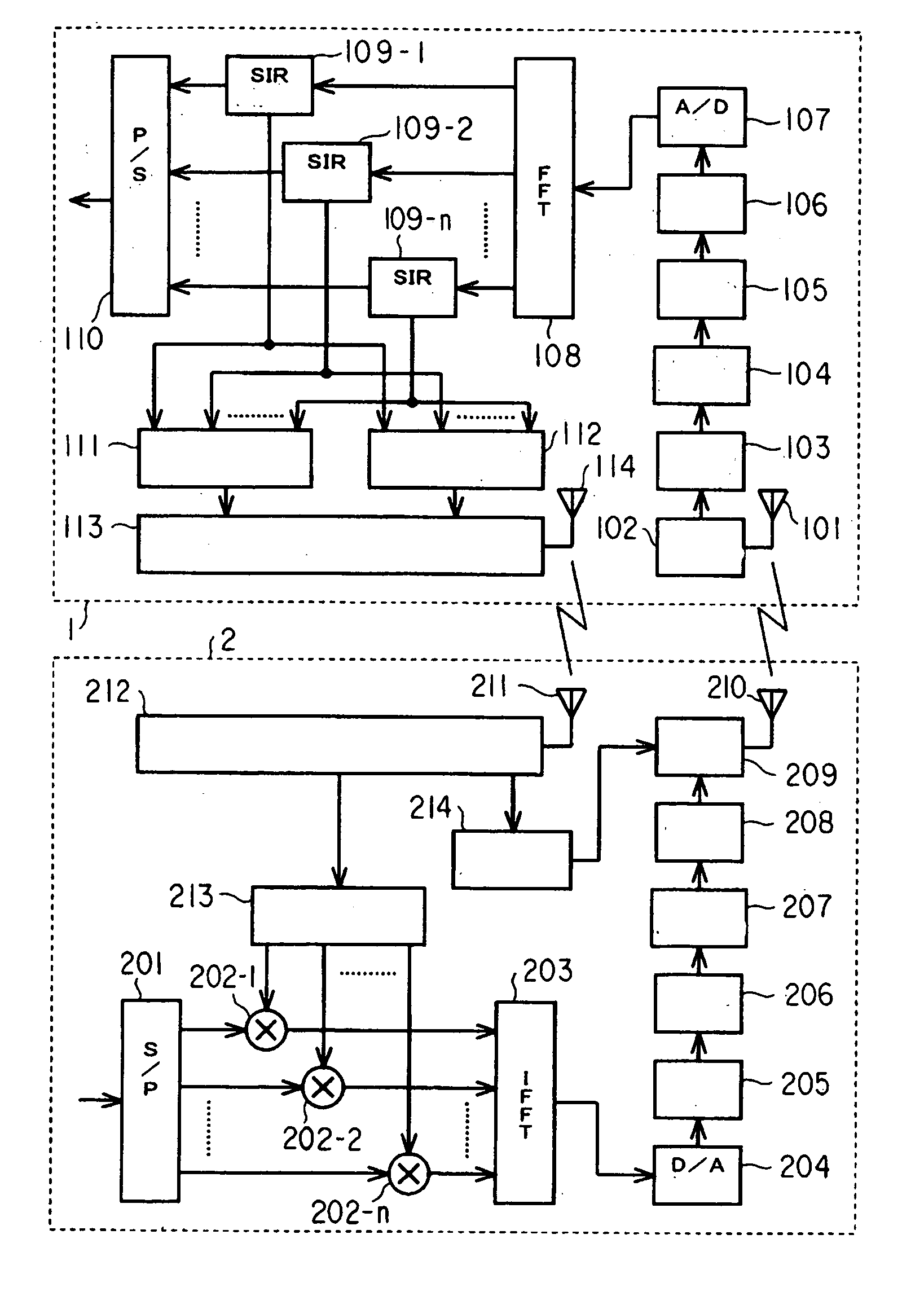Multi-carrier communication system, multi-carrier receiver apparatus and multi-carrier transmitter apparatus
a communication system and receiver technology, applied in the direction of orthogonal multiplex, power management, wireless commuication services, etc., can solve the problems of increasing interference with other stations, excessive power reception of receiving stations, unnecessarily decreasing cell capacitance, etc., to reduce individual quality value variation
- Summary
- Abstract
- Description
- Claims
- Application Information
AI Technical Summary
Benefits of technology
Problems solved by technology
Method used
Image
Examples
first embodiment
[0017] (First Embodiment)
[0018]FIG. 1 is a block diagram of a multi-carrier communication system according to a first embodiment.
[0019] The multi-carrier communication system shown in FIG. 1 includes two radio apparatuses 1, 2, to wirelessly send a multi-carrier signal from the radio apparatus 2 to the radio apparatus 1.
[0020] The radio apparatus 1 includes a reception antenna 101, an amplifier 102, a filter 103, a down-converter 104. a filter 105, an amplifier 106, an A / D converter 107, a high-speed Fourier transformer (hereinafter, referred to as FFT) 108, SIR measuring sections 109-1, 109-2 . . . 109-n, a P / S converter 110, a first command generating section 111, a second command generating section 112, a transmitter system 113 and a transmission antenna 114.
[0021] The multi-carrier signal radiated as a radio wave from the radio apparatus 2 is converted into an electric signal by the reception antenna 101 and inputted to the amplifier 102. The amplifier 102 amplifies the input...
second embodiment
[0058] (Second Embodiment)
[0059]FIG. 4 is a block diagram of a multi-carrier communication system according to a second embodiment. Incidentally, the elements like those of FIG. 1 are attached with like references, to omit the detailed explanation thereof.
[0060] The multi-carrier communication system shown in FIG. 4 includes two radio apparatuses 3, 4, to wirelessly send a multi-carrier signal from the radio apparatus 4 to the radio apparatus 3.
[0061] The radio apparatus 3 includes a reception antenna 101, an amplifier 102, a filter 103, a down-converter 104. a filter 105, an amplifier 106, an A / D converter 107, an FFT 108, SIR measuring sections 109-1, 109-2 . . . 109-n, a P / S converter 110, a second command generating section 112, a transmission antenna 114, an SIR information generating section 301 and a transmitter system 302. Namely, the radio apparatus 3 has the SIR information generating section 301 and transmitter system 302 in place of the first command generating section...
PUM
 Login to View More
Login to View More Abstract
Description
Claims
Application Information
 Login to View More
Login to View More - R&D
- Intellectual Property
- Life Sciences
- Materials
- Tech Scout
- Unparalleled Data Quality
- Higher Quality Content
- 60% Fewer Hallucinations
Browse by: Latest US Patents, China's latest patents, Technical Efficacy Thesaurus, Application Domain, Technology Topic, Popular Technical Reports.
© 2025 PatSnap. All rights reserved.Legal|Privacy policy|Modern Slavery Act Transparency Statement|Sitemap|About US| Contact US: help@patsnap.com



